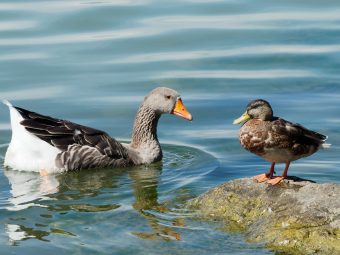
Migrating barnacle geese that lay their eggs in the Arctic zones of northern Russia are becoming confounded by earlier springs in their traditional nesting grounds, according to a study published in Current Biology. The rising temperatures in the Arctic circles caused by global warming are threatening the survival of this species, which travels more than 3,000 km, or 1,800 miles, to reach their nesting territory.
The research, released in May 2018, noted that the geese habitually make the month-long journey from parts of northern Germany and the Netherlands based on a biologically coordinated schedule now jeopardized by human activity. Rapid environmental changes have caused the animals to speed up their flight plans.
Bart Nolet, member of the research team from the Netherlands Institute of Ecology and the University of Amsterdam, told NPR, “They actually depart from the wintering areas around the same date regardless of whether it’s early or late spring in the Arctic,” because they “cannot predict what the weather is or what the season is up there from 3,000 kilometers distance.” This causes the geese to speed up their inherent migration pattern mid-flight, after they realize that the temperature is too warm. They complete the arduous expedition in only a week, leaving them exhausted.
Originally, the birds used to arrive and lay their eggs just as the winter snow melted. By the time their goslings hatched, plants began to grow, resulting in a “food peak” for the animals. Now, both adult and baby barnacle geese must bear the hardships of malnourishment.
Despite rushing their migration and flying “nearly nonstop from the wintering areas to their breeding grounds,” according to Nolet, the 10 days needed after migration to find food and recover from exhaustion still puts the birds behind schedule. The geese cannot lay their eggs straightaway. Instead, after their expedited journey, they must rest and forage for food to ensure their own survival and the vitality of their offspring — ultimately the determining factor in the continuance of their species.
Source: Inhabitat
